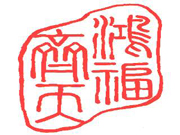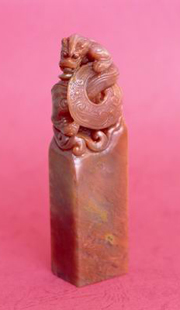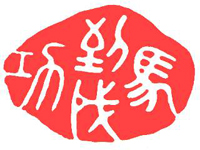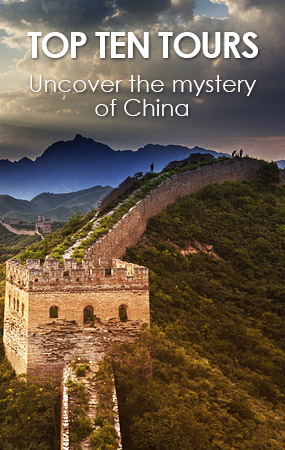Seal-Engraving (Chop)
 Visitors to China may be amazed at many souvenir shops where the service of " Seal-Engraving" is readily available. Very often, the engraver claimed that a seal would be finished in 15 minutes - less than the time the visitors usually stay in a souvenir shop. And many foreign businessmen who are so used to signing their names in a contract found with astonishment that their Chinese counterparts preferred to use seals. To the Chinese, a seal was for many centuries a symbol of power. The emperor's seal was called Xi, and it gave authority to all his inferiors, and governments at different levels all issued orders endorsed with official seals. In other words, the seals stood for different levels of government and their corresponding powers.
Visitors to China may be amazed at many souvenir shops where the service of " Seal-Engraving" is readily available. Very often, the engraver claimed that a seal would be finished in 15 minutes - less than the time the visitors usually stay in a souvenir shop. And many foreign businessmen who are so used to signing their names in a contract found with astonishment that their Chinese counterparts preferred to use seals. To the Chinese, a seal was for many centuries a symbol of power. The emperor's seal was called Xi, and it gave authority to all his inferiors, and governments at different levels all issued orders endorsed with official seals. In other words, the seals stood for different levels of government and their corresponding powers.
The art of seal-engraving can be traced back to more than 3,000 years to the Yin Dynasty when the cutting of inscriptions on tortoise shells were the only way that the ideas of human being could be recorded. It developed rapidly in the Qin Dynasty (221-207 BC) when people engraved their names on utensils and documents to claim ownership or for verification in social contacts.
 Wen Peng (1489-1573), the son of Wen Zhengming, a famous Ming Dynasty calligrapher and painter, is known as the "father of seal engraving art". But seal engraving really came to age only in the 19th century when a group of famous engravers came to the fore.
Wen Peng (1489-1573), the son of Wen Zhengming, a famous Ming Dynasty calligrapher and painter, is known as the "father of seal engraving art". But seal engraving really came to age only in the 19th century when a group of famous engravers came to the fore.
Some present engravers in China are professionals, but most are amateurs. The Xiling Seal Engravers' Club in Hangzhou, Zhejiang Province, was founded in 1986 by Wu Changshuo, a renowned painter and engraver. It is China's biggest national engraver's organization today.
As we all know, traditional Chinese painting is a harmonious combination in the same picture of the arts of painting, calligraphy with engraving skills and the art of the arranging Chinese characters into imaginative patterns in a very limited space.  A master seal engraver must be able to write different styles of the Chinese scripts and arrange all the characters in a perfect balance. Like a master calligrapher, sometimes, he needs to exaggerate the thickness or thinness of a stroke, elaborately straighten or curve it, or even deliberately deform an ideogram to create an artistic effect.
A master seal engraver must be able to write different styles of the Chinese scripts and arrange all the characters in a perfect balance. Like a master calligrapher, sometimes, he needs to exaggerate the thickness or thinness of a stroke, elaborately straighten or curve it, or even deliberately deform an ideogram to create an artistic effect.
A perfect seal is very much determined by the engraver's speed and strength of his wrist and finger movements, as well as the particular tool he uses. Also he should be very familiar with the various materials- jade, gold, brass, stone, wood and etc-so that he can apply his tool with the right exertion and rhythm.
Today, stone is the most widely used material in seal engraving.  Among all the stones, Shoushan stones, which come from the northern outskirts of ShoushanCounty, FuzhouCity, are the most famous. The most valuable for engravers is Tianhuang Stone, a kind of Shoushan stone. It is said that the emperors of the Qing Dynasty used to put a piece of Tianhuang on the table for wealth and good luck when they held a ceremony to worship heaven.
Among all the stones, Shoushan stones, which come from the northern outskirts of ShoushanCounty, FuzhouCity, are the most famous. The most valuable for engravers is Tianhuang Stone, a kind of Shoushan stone. It is said that the emperors of the Qing Dynasty used to put a piece of Tianhuang on the table for wealth and good luck when they held a ceremony to worship heaven.
Another less precious stone is called Chicken Blood stone, which comes from ChanghuaCounty in ZhejiangProvince. The " Chicken's blood" stone contains cinnabar which makes it look like blood splashed on the stone in a free pattern.
Nowadays, seals are still widely used, and the art of seal engraving has become more, not less, popular than ever before. More note-worthy is that many foreigners are now able to appreciate this art form, which for a long time has been considered uniquely Chinese.

